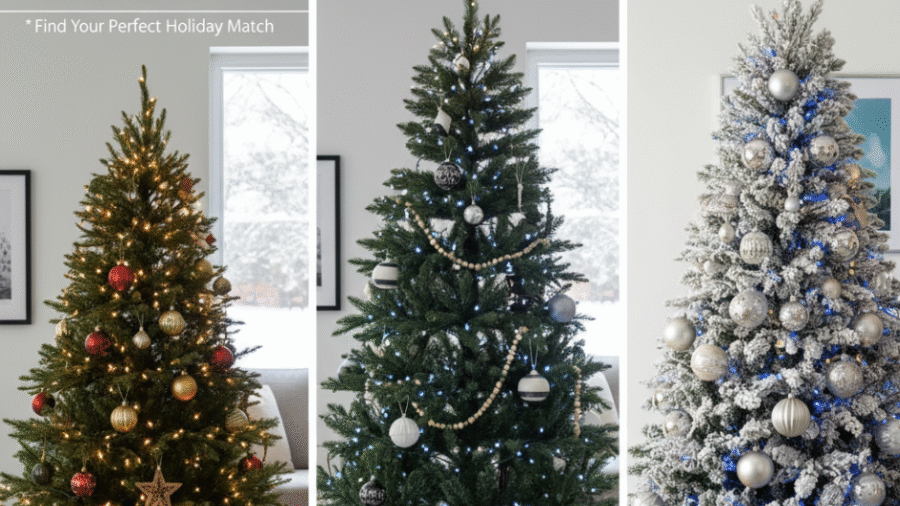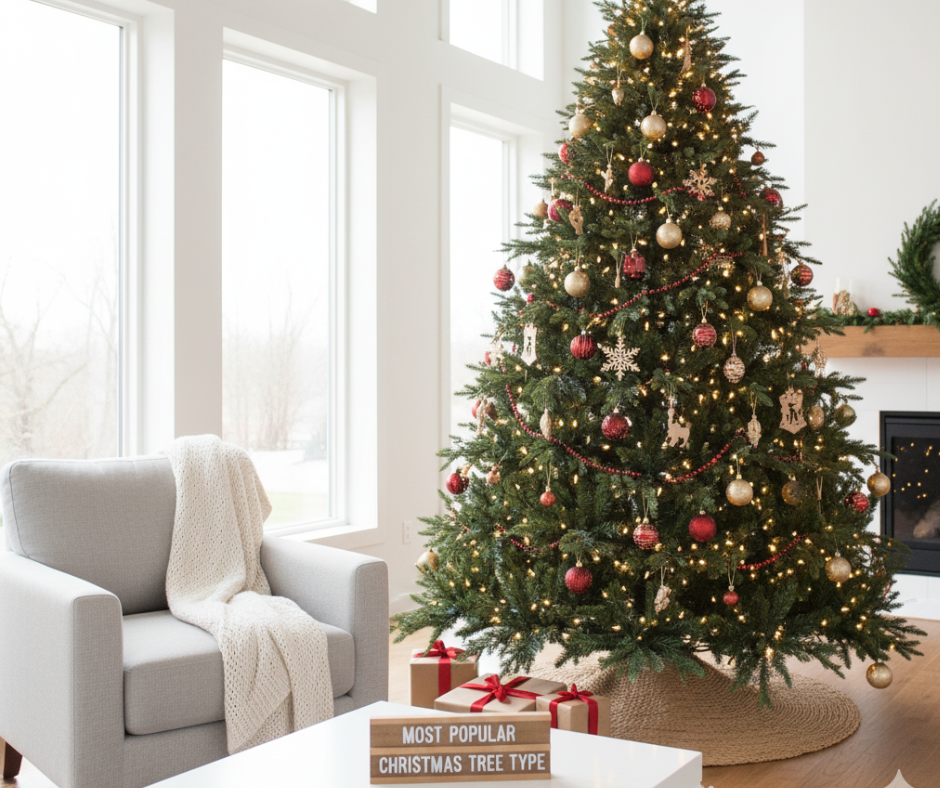Choosing the perfect Christmas tree is often the first step to getting into the holiday spirit. While some prefer real trees for their fresh scent and natural beauty, others opt for artificial trees for convenience and reusability. Regardless of the type, many wonder: What is the most popular Christmas tree type?
This article explores the most beloved Christmas tree species, what makes them popular, their characteristics, and how to choose the best one for your home in 2025.
The Classic Christmas Tree Types: Fir, Spruce, and Pine
Most Christmas trees come from three main families: fir, spruce, and pine. Each has distinct qualities that appeal to different preferences, climates, and decorating styles.
Fir Trees
Fir trees are by far the most popular Christmas tree species in North America and Europe, known for their:
-
Needle Retention: Fir needles tend to stay fresh and attached longer than spruce or pine needles, reducing mess.
-
Shape and Texture: They usually have a classic conical shape with soft, flat needles that are comfortable to touch.
-
Aroma: Many firs have a pleasant, traditional Christmas scent.
Popular fir species include:
-
Fraser Fir (Abies fraseri): Widely considered the most popular Christmas tree in the U.S., it offers dark green needles with silver undersides, strong branches, and excellent needle retention.
-
Noble Fir (Abies procera): Known for bluish-green needles and dense, robust branches perfect for hanging heavy ornaments.
-
Balsam Fir (Abies balsamea): Famous for its spicy scent and symmetrical shape, popular in the Northeastern U.S.
-
Concolor Fir (Abies concolor): Has longer blue-green needles and a citrus scent, providing a unique alternative.
Firs are ideal for families wanting a beautiful, low-maintenance tree with a clean needle drop and traditional look.
Spruce Trees
Spruce trees have a sharp, pointed needle that grows around the branch on all sides, creating a fuller look at first glance. However, spruces tend to shed needles faster and have more brittle branches.
Common spruce species:
-
Norway Spruce (Picea abies): Popular in Europe and traditional in Christmas celebrations, they have richly colored branches but drop needles quickly.
-
Blue Spruce (Picea pungens): Known for its bluish color and strong branches, it is often used for its striking appearance despite slightly prickly needles.
-
White Spruce (Picea glauca): Favored in Canada and Northeastern U.S., it features symmetrical shape and light green foliage.
Spruce trees offer a classic Christmas silhouette but require more care to maintain freshness.
Pine Trees
Pines differ because their needles grow in clusters, offering a unique texture and look.
Popular pines for Christmas trees:
-
Scotch Pine (Pinus sylvestris): The most widely sold real Christmas tree in the U.S., valued for exceptional needle retention and strong branches.
-
Eastern White Pine (Pinus strobus): Has long, soft needles giving a graceful and airy appearance, but branches are less sturdy.
-
Sugar Pine (Pinus lambertiana): Known as the “King of Pines,” it produces very long needles and has a full shape.
Pines are great for those who want a traditional tree with a distinct texture and classic pine scent.
The Most Popular Christmas Tree: Fraser Fir
Among all the varieties, the Fraser Fir has emerged as the most popular Christmas tree species across North America and beyond. Reasons for its popularity include:
-
Excellent needle retention that keeps the tree fresh throughout December.
-
Strong, sturdy branches suitable for heavy ornaments.
-
A beautiful, dark green color with silver undersides that adds depth.
-
A sweet, pleasant aroma that fills homes with holiday spirit.
-
Adaptability to many climates and reliable availability.
Nurseries and Christmas tree farms predominantly grow Fraser firs, and numerous artificial Christmas trees are modeled after this species for its aesthetic appeal and durability.
Artificial Trees: Popular Types Mimicking Real Trees
Artificial Christmas trees have grown in popularity due to convenience, sustainability, and ease of use.
Many artificial trees are designed to replicate the popular real tree species:
-
Fraser Fir replicas: Known for realistic needle shapes and colors.
-
Noble Fir models: Emphasize dense foliage and lifelike needles.
-
Blue Spruce simulation: Often feature bluish-green hues with detailed needle replicas.
-
Scotch Pine artificial trees: Replicate its classic pine needle clusters and branch structure.
Artificial trees often include built-in lights, flocking, and branch shaping technology to capture the look of nature while minimizing maintenance.
Factors Influencing Christmas Tree Popularity
-
Needle Retention: Families want trees that hold needles to reduce clean-up.
-
Branch Strength: To carry ornaments without sagging or damage.
-
Scent: The nostalgic pine aroma is important for many buyers.
-
Appearance: Fullness, symmetry, and color appeal influence choice.
-
Availability and Price: Local availability and cost impact consumer preferences.
Tips for Choosing Your Perfect Christmas Tree Type in 2025
-
Decide Between Real and Artificial: Consider your budget, allergies, clean-up willingness, and environmental values.
-
Know Your Space: Measure room height and width to select an appropriately sized and shaped tree.
-
Choose Species Based on Care Level and Scent Preference: Firs for freshness and symmetry; spruces for iconic shape; pines for texture.
-
Purchase from Reputable Growers or Sellers: Ensure tree freshness and sustainability.
-
Consider Theme and Decor Style: Some trees’ look and color match specific decorating schemes better.
Read More: Is the Christmas Tree Lucky? Understanding the Symbolism, Traditions, and Beliefs
Conclusion
The Christmas tree tradition is enriched by the variety of beautiful tree species available, but the Fraser Fir stands out as the most popular Christmas tree type in 2025 for its combination of beauty, durability, aroma, and ease of care. Spruce and pine trees also maintain strong followings due to their unique qualities.
Whether choosing a fresh Fraser fir from the local tree farm or a realistic artificial counterpart, selecting the right Christmas tree enhances the holiday atmosphere and fulfills seasonal traditions with style.



Add a Comment